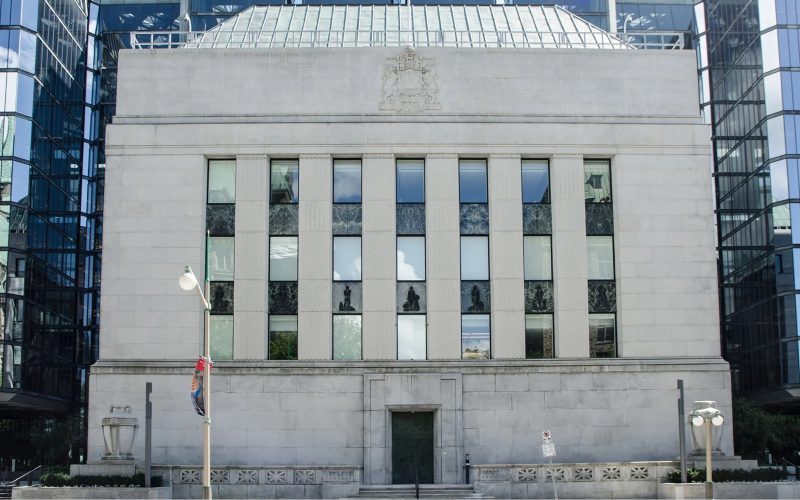by Kristina Hooper, Chief Global Market Strategist, Invesco
Key takeaways
Central banks embrace big hikesWe’ve seen 75 basis point hikes in Europe and Canada, and markets expect the U.S. Federal Reserve to follow suit. |
Is smaller better?I believe central banks might benefit from making smaller rate hikes going forward, so that they can better calibrate monetary policy given all the other factors impacting their respective economies. |
I’m old enough to have not only heard — but embraced — expressions like “50 is the new 30” (well, why not?), although I definitely don’t believe that orange (one of the colours I dislike most) is the new black. I’m happy to announce that I’ve coined a new expression, one that I think is appropriate for the times — at least the monetary policy times: “75 is the new 25.” Basis points, that is. It seems like central banks are giving away jumbo rate hikes like they are candy.
Unfortunately, I see a few different problems with this approach. Most importantly, the impact of rate hikes takes time to show up in economic data. And so I fear that any central bank that hikes rates in 75 basis point increments is turning monetary policy into an even more blunt instrument and runs the risk of overdoing it.
Central banks embrace the 75 basis point hike
European Central Bank. Not only did the European Central Bank (ECB) hike rates by a mammoth 75 basis points last week, it also announced it would continue to raise rates. And that position was reinforced by very hawkish rhetoric over the weekend from various ECB officials.
I was particularly struck by comments from ECB Vice President Luis de Guindos, who explained that the hike was intended to keep inflation expectations anchored. This gave me pause, since a very significant portion of inflationary pressures has come from energy prices, and so I couldn’t help but wonder if the state of the Russia-Ukraine war might have a greater effect on inflation expectations than ECB words and actions. Regardless, the ECB seems to be playing with fire by hiking rates so significantly given the vulnerabilities of the eurozone economy.
Bank of Canada. Despite seeing material improvement in year-over-year inflation, the Bank of Canada (BoC) also delivered a 75 basis point hike last week, on the heels of a 100 basis point hike in July. And like its European counterpart, the BoC has warned that it will keep on keeping on.
Governor Tiff Macklem proclaimed, “The Governing Council still judges that the policy interest rate will need to rise further.”1 The rationale is to “front load” rate hikes; as Carolyn Rogers, Senior Deputy Governor of the Bank of Canada, explained last Thursday, “By front-loading interest rate increases now, we’re trying to avoid the need for even higher interest rates and a more pronounced slowing of the economy down the road.”2
Now it is true that Canada is in a very different position than the eurozone, and in my view it is certainly better able to tolerate a very significant rate hike. But I still worry that the lagged effect of rate hikes could lead to a worse impact on the economy than necessary. File this under “When the cure may be worse than the disease.”
U.S. Federal Reserve. Then there is the United States. Markets have to come to expect, helped along by U.S. Federal Reserve (Fed) rhetoric, that the Fed is likely to hike rates by 75 basis points in September. This expectation persists despite inflation moderating and longer-term inflation expectations becoming better-anchored.
I believe the U.S. economy is still fundamentally sound, with unemployment at a very low level. However, the Fed has readily admitted that it will take time for the negative effects of tightening thus far to show up in the economy. For example, housing has only begun to show the initial effects of a major increase in mortgage rates.
Fiscal stimulus complicates the picture
Another problem is that some countries will be implementing fiscal stimulus measures just as monetary policy is tightening. Just look at new UK Prime Minister Liz Truss’ pledge to provide massive stimulus to help ease the financial pressure on households created by high energy prices. And the eurozone has its own mix of fiscal and regulatory efforts, ranging from national price caps to subsidies to conservation and rationing measures, while some are cutting value-added taxes paid by consumers on energy. All this will make the situation far more complicated for central banks.
I believe central banks might benefit from making smaller rate hikes, so that they can better calibrate monetary policy given all the other factors impacting their respective economies.
Would a positive inflation report matter?
And so here we find ourselves, with eyes around the world hungrily waiting for the next inflation print from the United States on Sept. 13. The belief that the Consumer Price Index (CPI) print could come in better than expected has buoyed markets in recent days.
And then on Sept. 12 we got the release of the NY Fed’s Survey of Consumer Expectations, which showed a very substantial drop in consumer inflation expectations. Median one-year ahead inflation expectations fell from 6.2% in July to 5.7% in August, while median three-year ahead inflation expectations fell from 3.2% in July to 2.8% in August.3
However, I can’t help wondering that if 75 basis points is still a fait accompli, should we really be that excited if the CPI print is as good as markets are starting to anticipate? One colleague of mine provided an analogy that was spot on: it’s like getting in the shower in the morning and realizing the water is too cold, so you turn the handle entirely in the opposite direction, which then causes the water to scald you, rather than moving it slowly in order to calibrate the temperature.
Let me finish by reminding you that, in 2015, as market participants waited for the Fed to begin rate hikes following many years of ultra-low interest rates, some economists argued it would be appropriate for the Fed to start with a 12.5 basis point rate hike as a way to softly begin the tightening process and not to cause disruption. Now the Fed is hiking rates in 75 basis point chunks, while ratcheting up quantitative tightening. While inflation is in a very different place than it was in 2015, I can’t help but wonder if the Fed and perhaps other central banks are overdoing it.
Call me a cockeyed optimist (to quote my favourite ’90s sitcom), but I continue to believe the Fed will honour its pledge of being data dependent, and there is still a good chance it could deliver only a 50 basis point rate hike in September. If not, I hope the Fed pivots to a less hawkish stance soon thereafter. A lot of tightening has occurred in a short period of time, and while the U.S. economy has held up well so far, I do worry about the negative impacts that would continue to accumulate if the Fed continues on its current hawkish path.
Conclusion
In summary, while central banks think 75 is the new 25, I hope that mindset changes. Data dependency and adjustment will be critical in avoiding a hard landing, in my view. In other words, we may have already had enough “front loading” from central banks, and it’s time to get back to 25 basis point rate hikes. Perhaps going forward, “front loading” should only be for dishwashers.
Footnotes
1 Source: Bank of Canada, Sept. 7, 2022
2 Source: Bank of Canada, Sept. 8, 2022
3 Source: Federal Reserve Bank of New York Survey of Consumer Expectations, Sept. 12, 2022
Copyright ©














